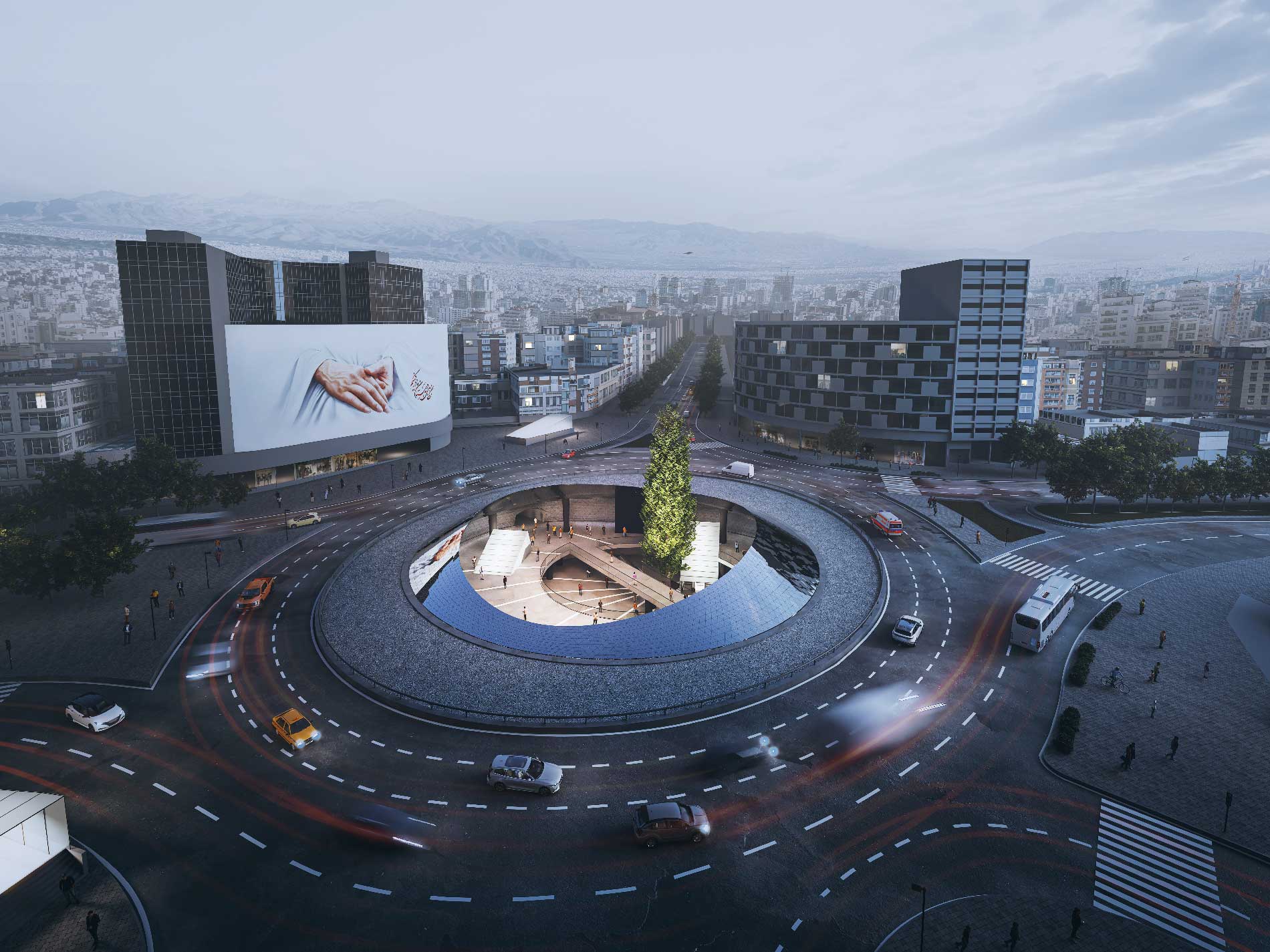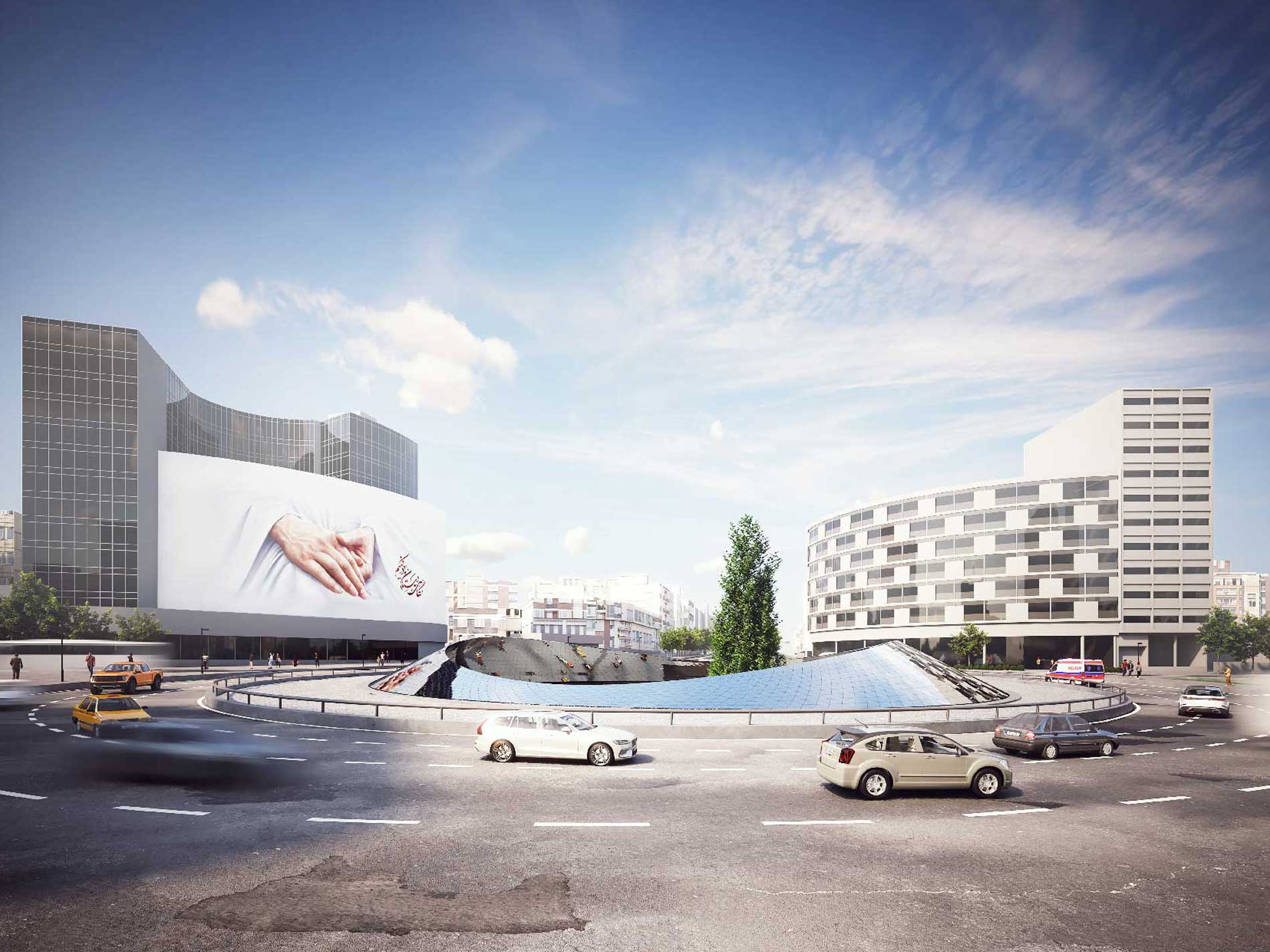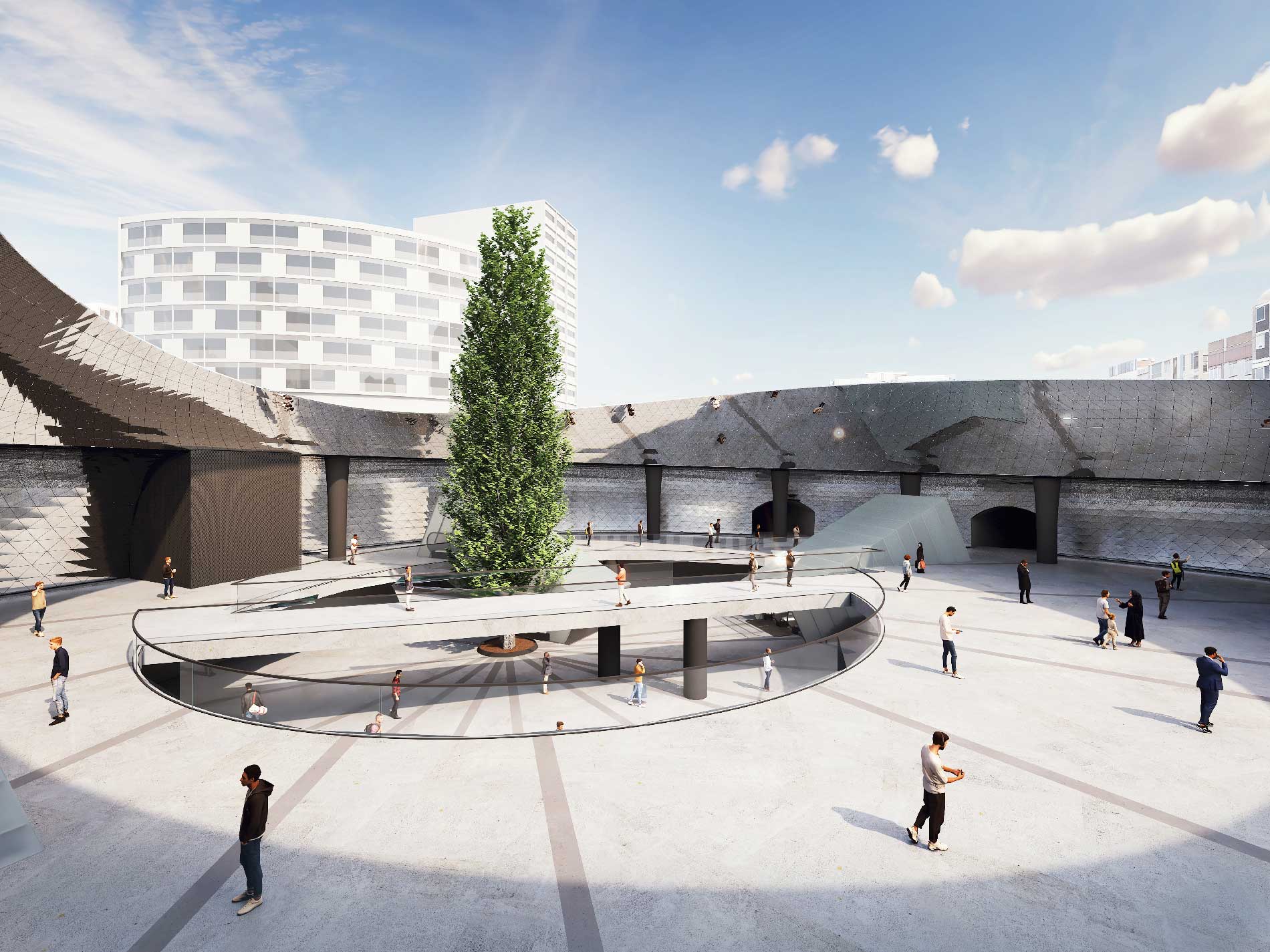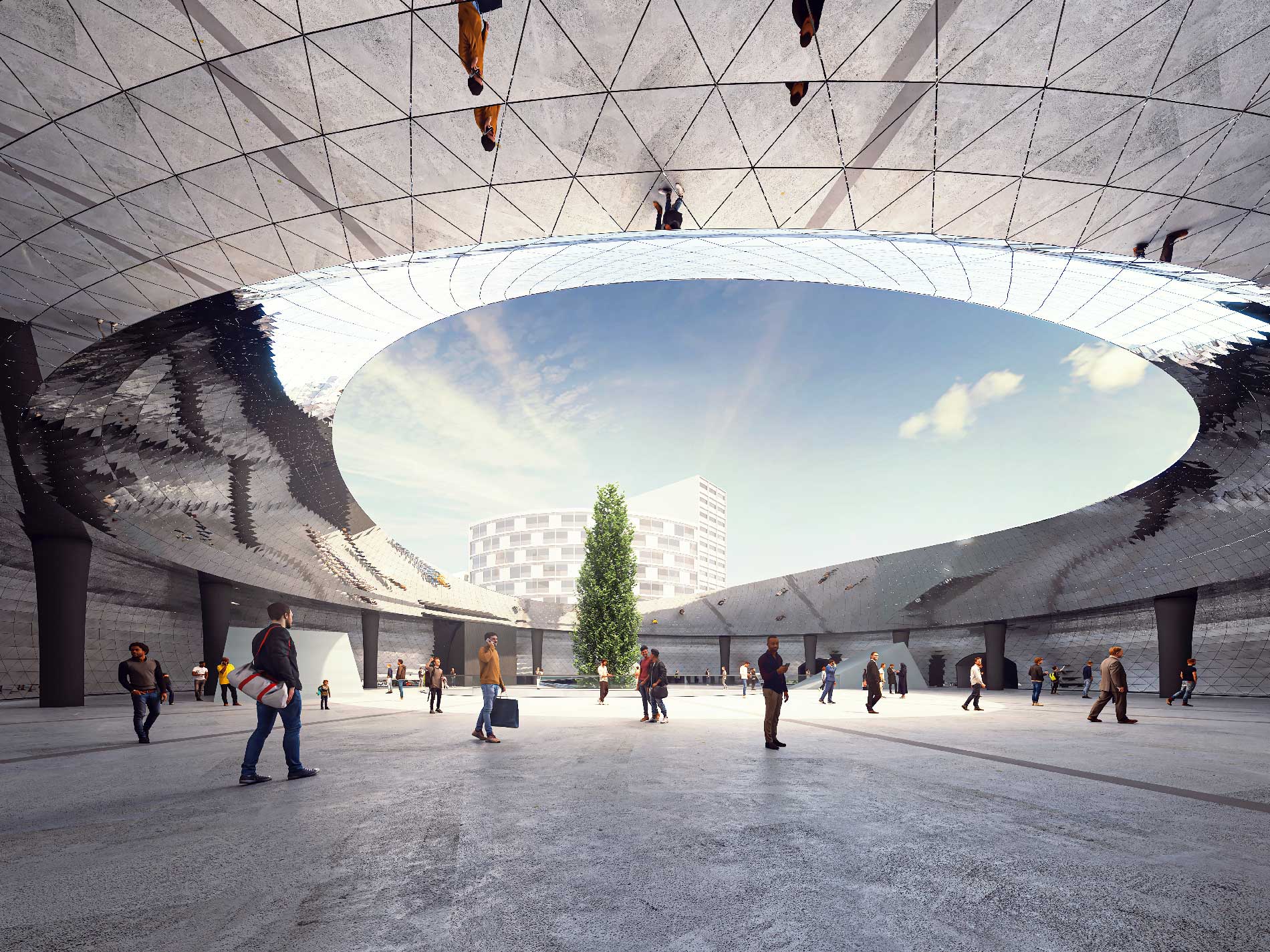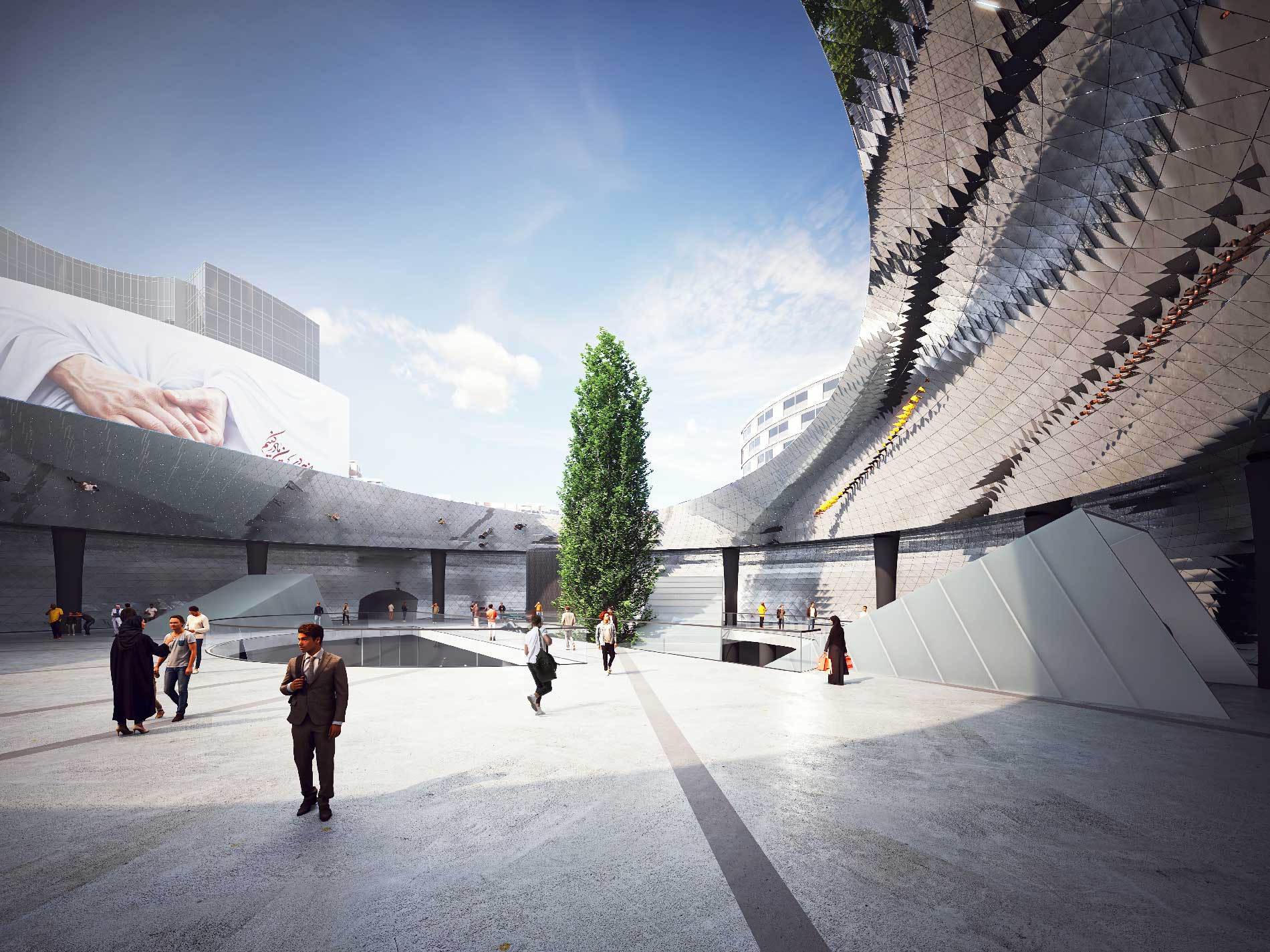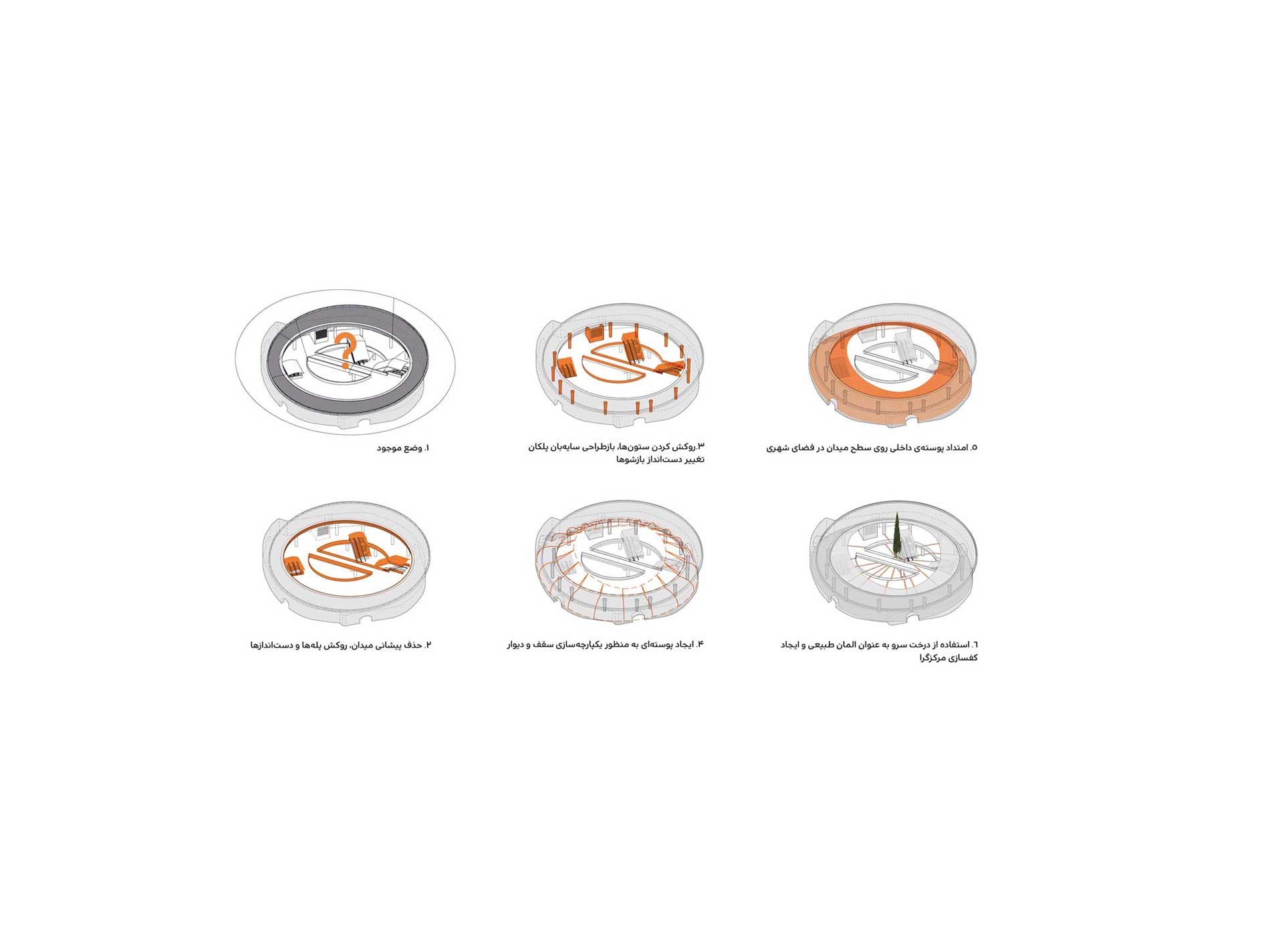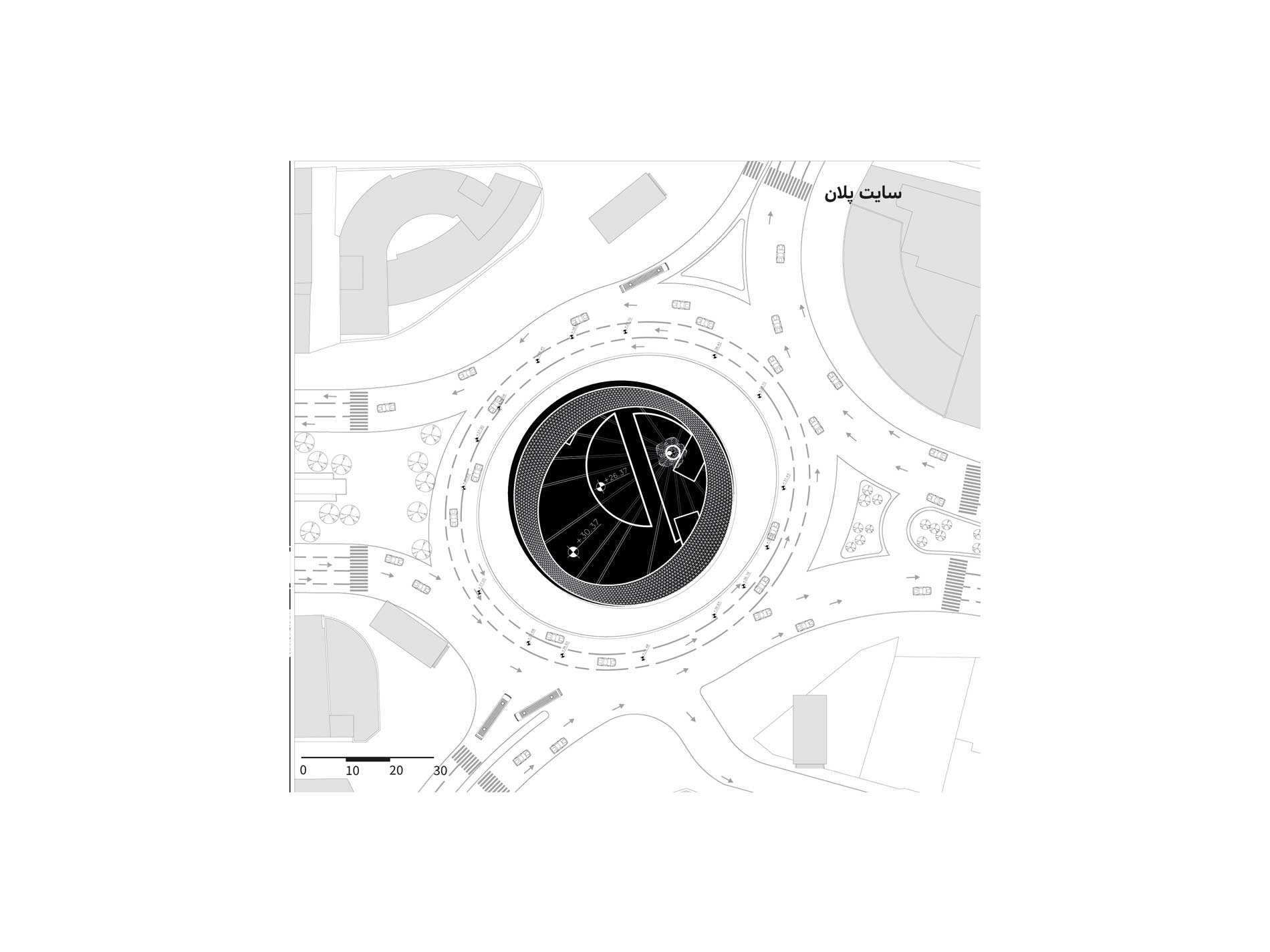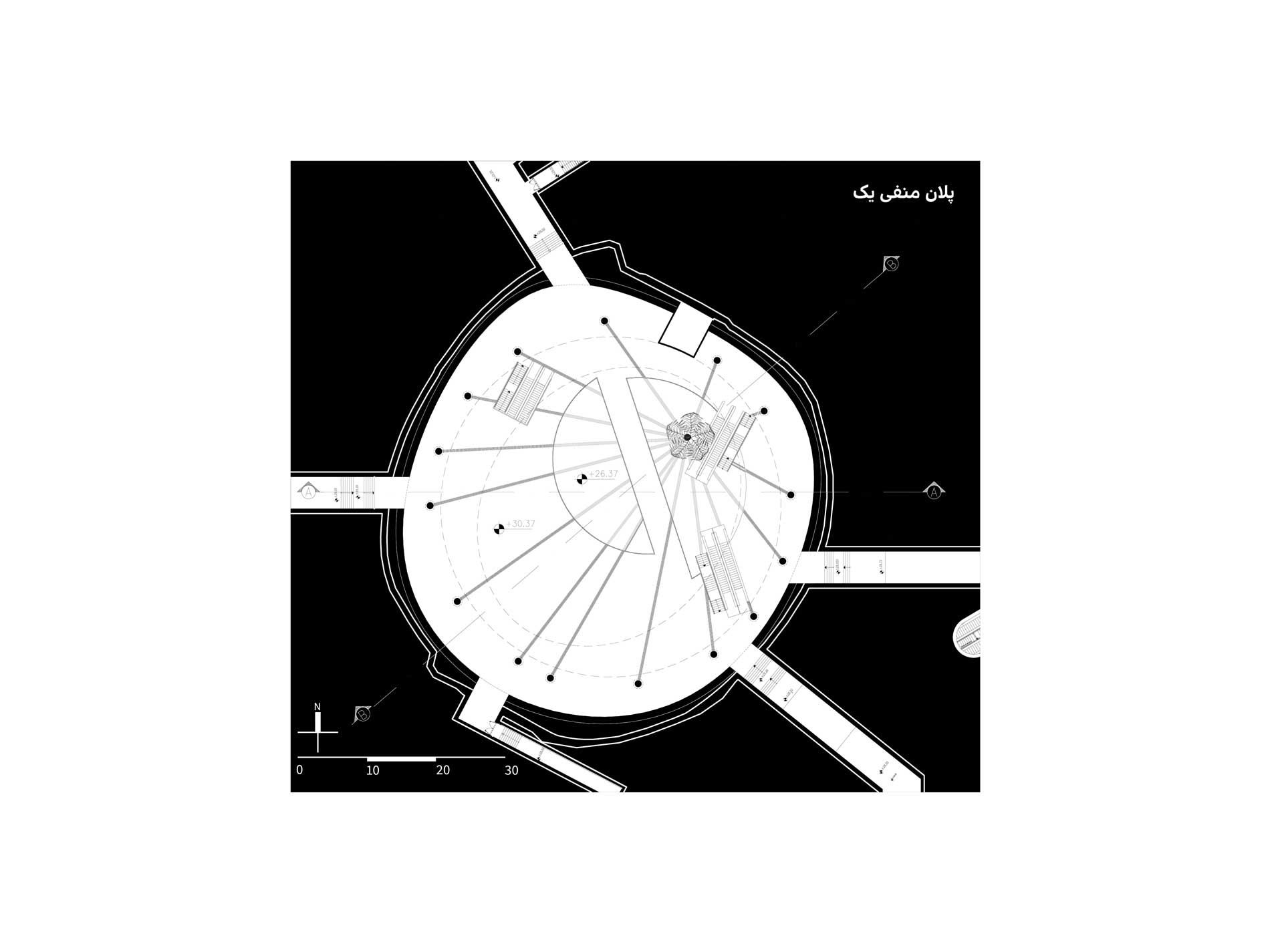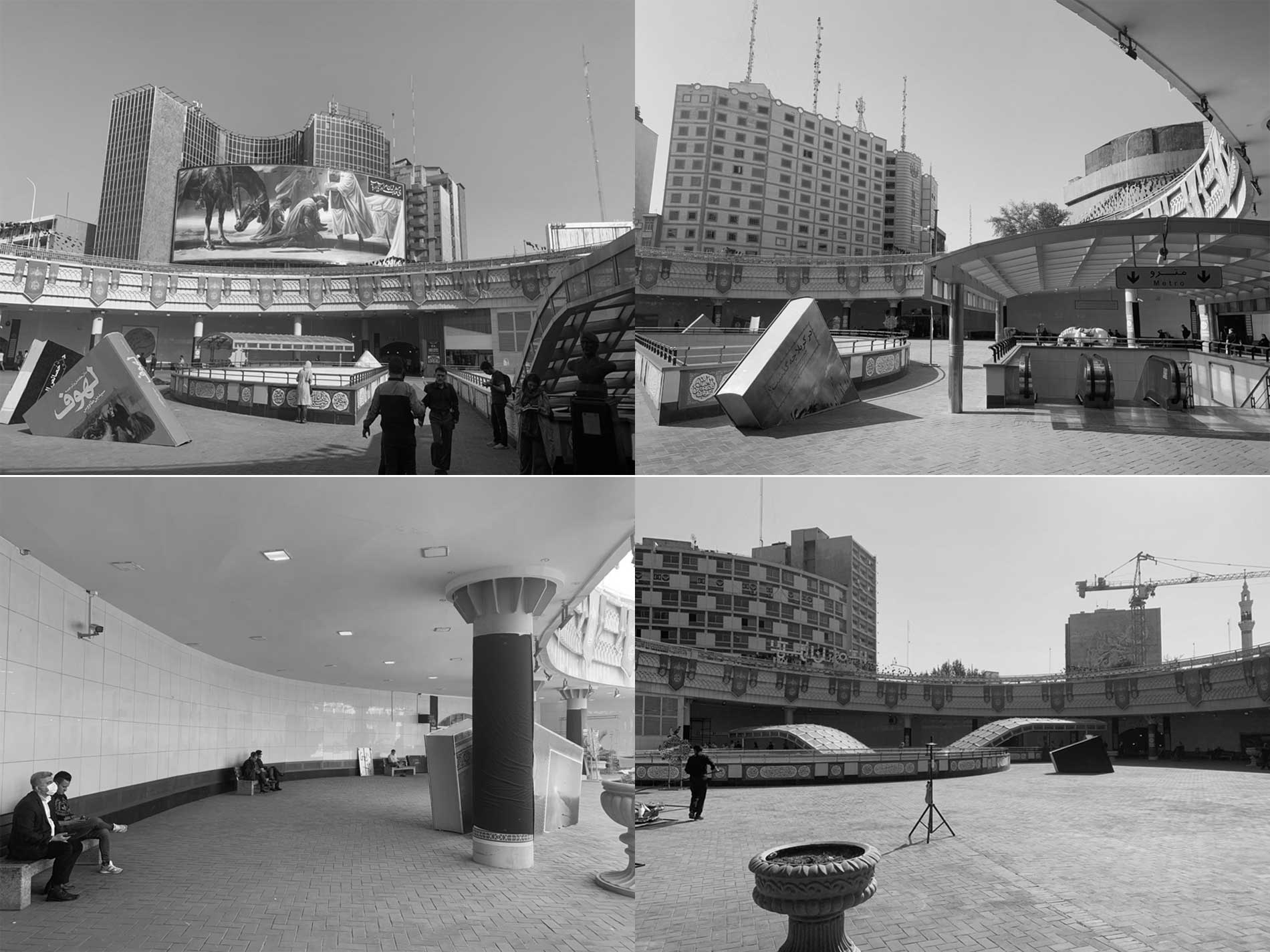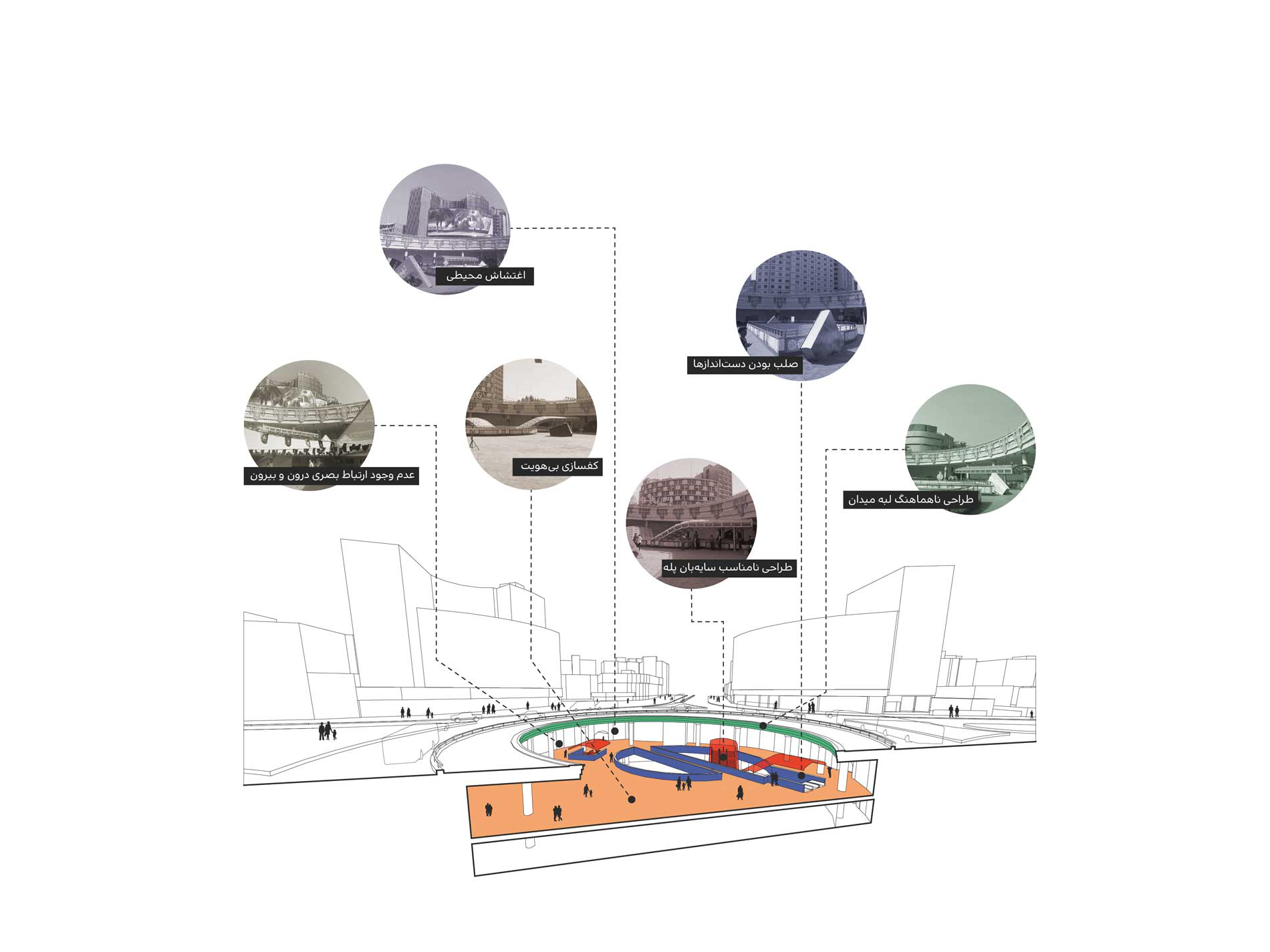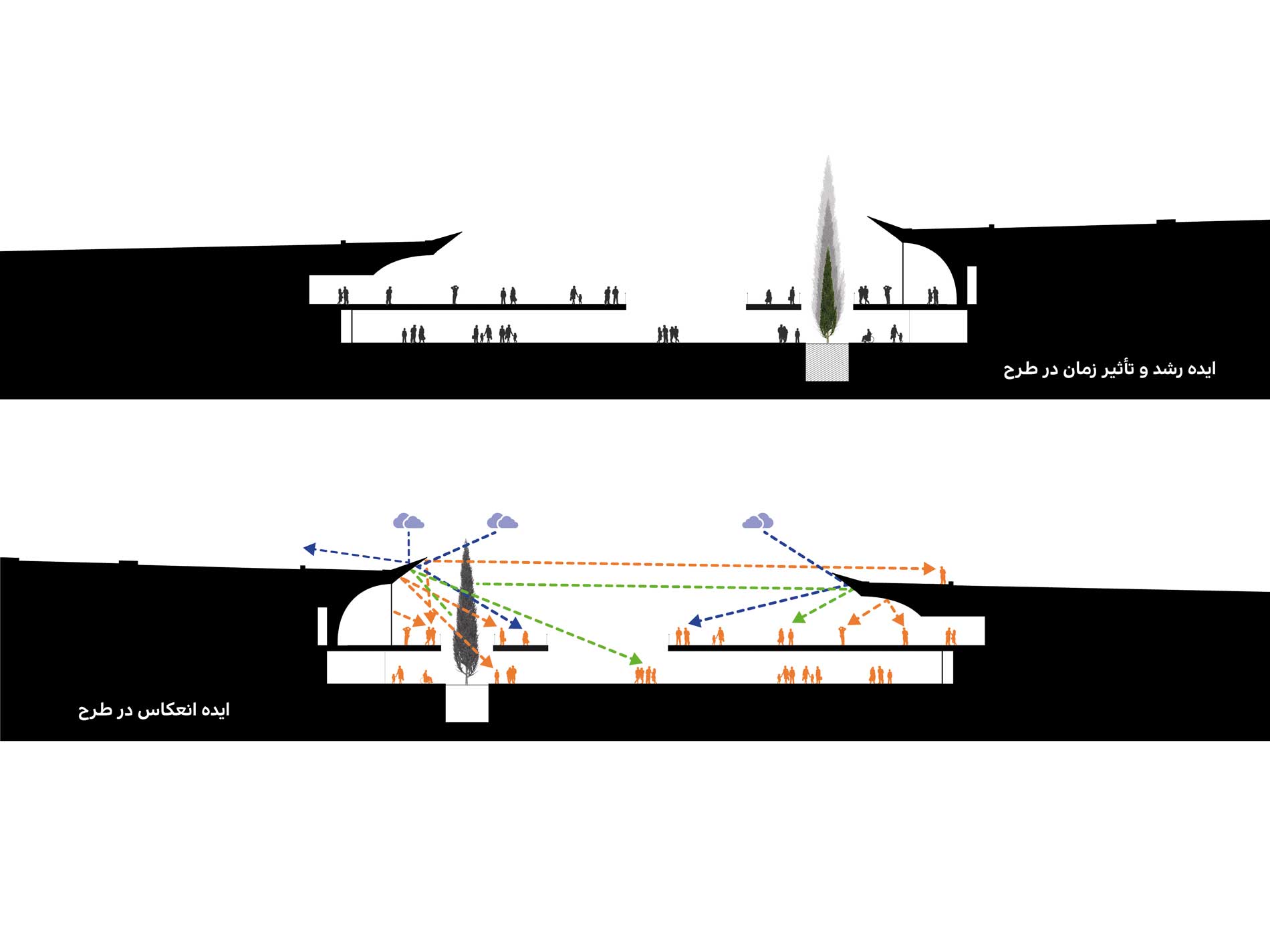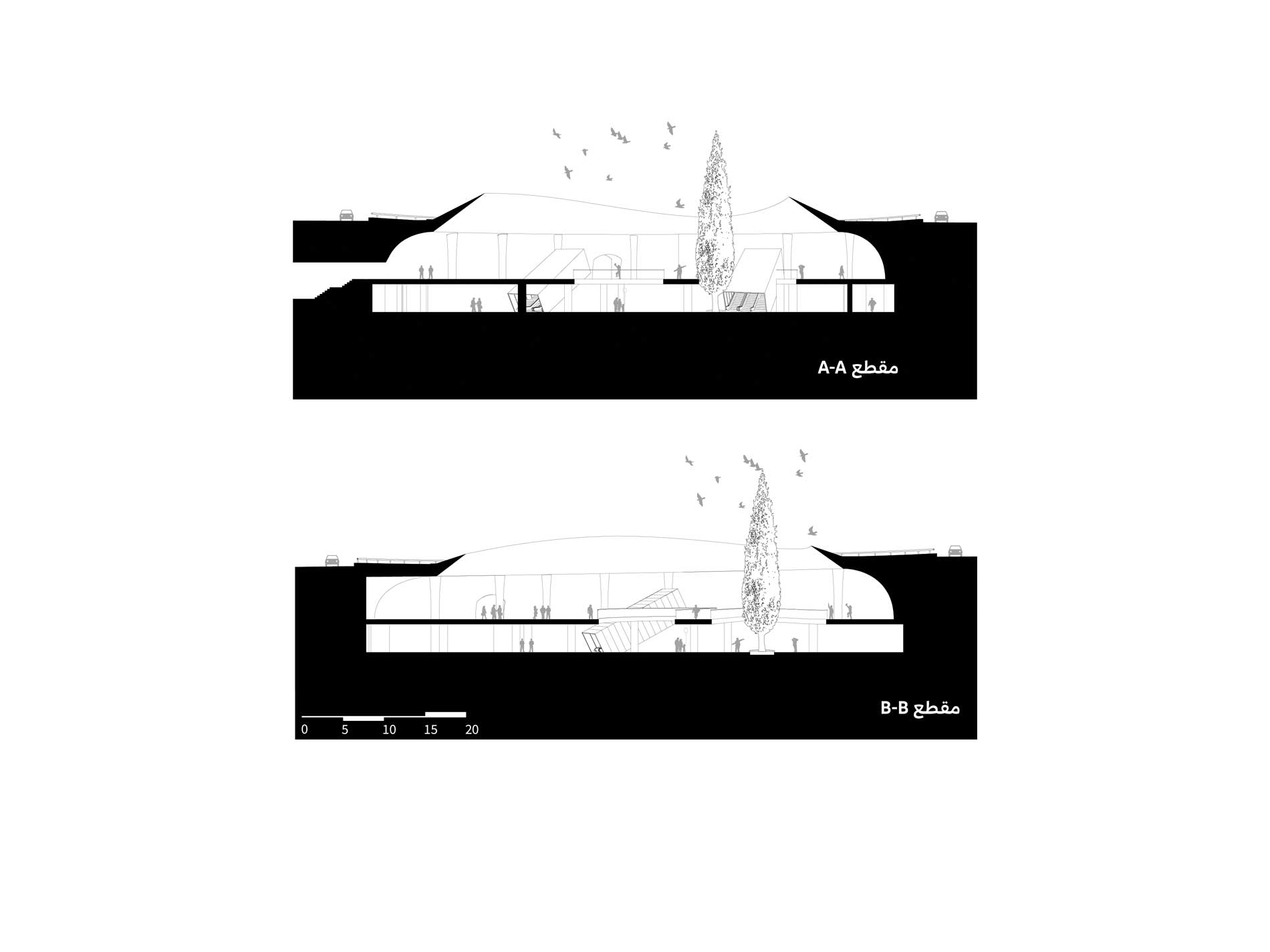VALIASR Square
Project Type: Urban Space – Regeneration ; Design: Karand Architectural Group ; Client: Tehran Municipality
The design process started with a problem statement based on the analysis of the existing features of the square. Currently, the square faces these three main problems:
- Visual clutter and spatial incoherence in interior
- Absence of an integrated spatial character for both underground and street levels
- Dissociation of the interior space of the square from the street
Regarding these issues, fundamental to the proposal were these design objectives:
- Spatial organization and creating formal continuity in the square (between the street and underground levels)
- Redesigning the whole square as an urban space rather than designing a singular urban element
Based on these objectives, the main design solution was creating a single united shell for the square to integrate the interior space (underground levels), walls, and ceiling together, just like one of the Iranian historical architecture methods. Creating unity on both levels of Valiasr Square, this shell gives an order to different components of the space.
Answering the next issue, which is building the symbolic character of the square, design solutions were based on two concepts: Reflection and Time.
Reflection: As the designed shell was considered to be made of shiny steel, it will be reflective and reminiscent of both mirror work in Qajar architecture and contemporary sculptures in urban spaces. Furthermore, it will consist of triangular pieces that evoke sacred spaces. This idea allows the person to be a part of the artwork through reflection; as a result, it gives an interactive character to the design. Meanwhile, visual communication will be provided between the inside space of Valiasr square and outside it.
Time: in the predicted location for the element in the previous plan, planting a Cypress tree Is suggested. Unlike other artificial elements in urban spaces, the Cypress tree has been chosen as the main element of the project. This tree, considered a sacred element in Iranian collective and historical memory, carries the concept of time due to its long life.
Emphasizing the values and concepts of historical Iranian architecture, the combination of reflective steel shell and cypress tree as a natural element suggests a new reading of the concepts. finally, these elements will give meaning to the space, and as a result, the square finds its character and symbolic identity as a whole.
Project Information
Location
Tehran
Date
2022
Size
4040 m2
Status
Competition
Prize
Joint Winner
Client
Tehran Municipality

